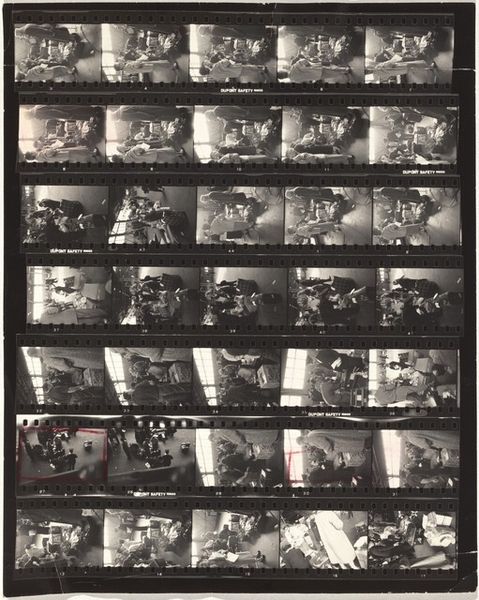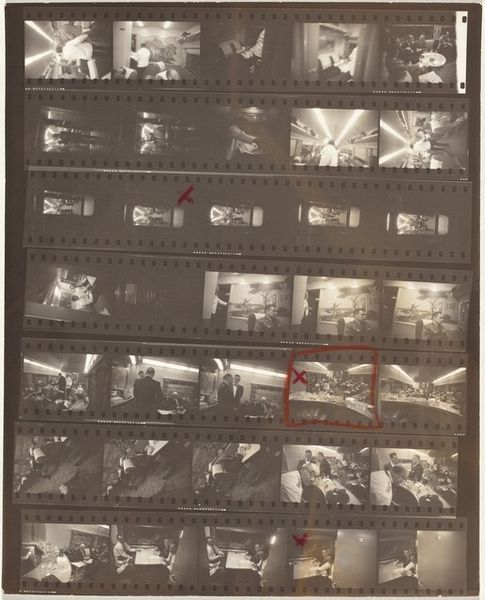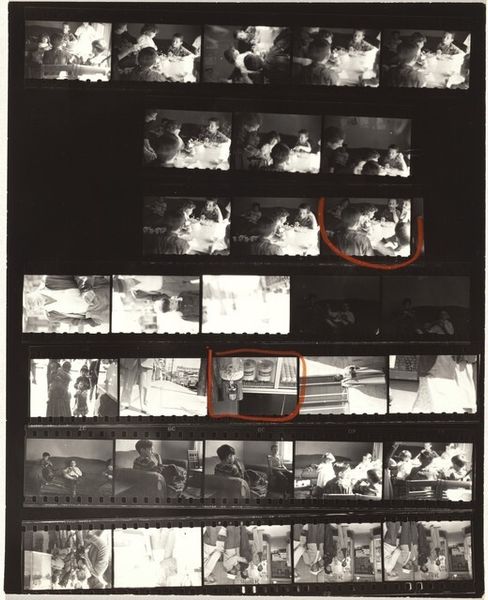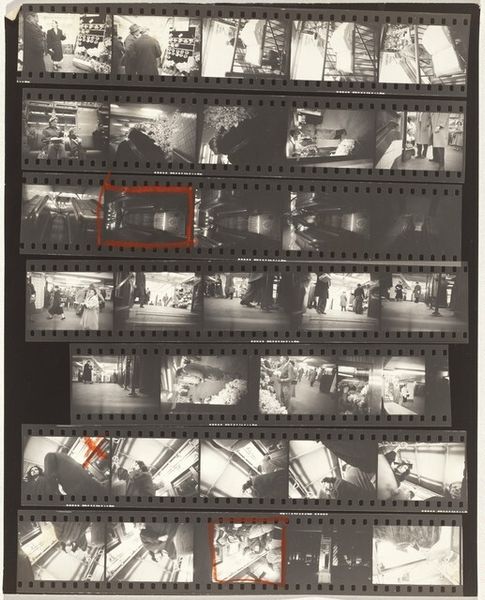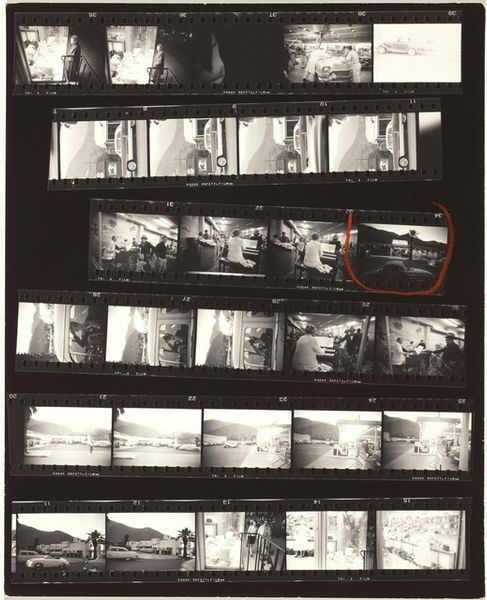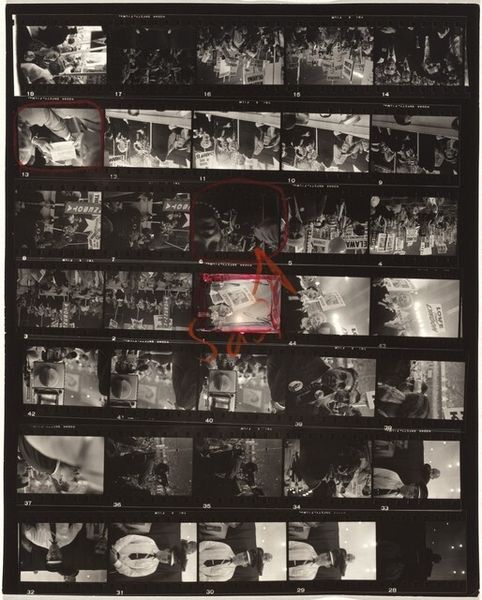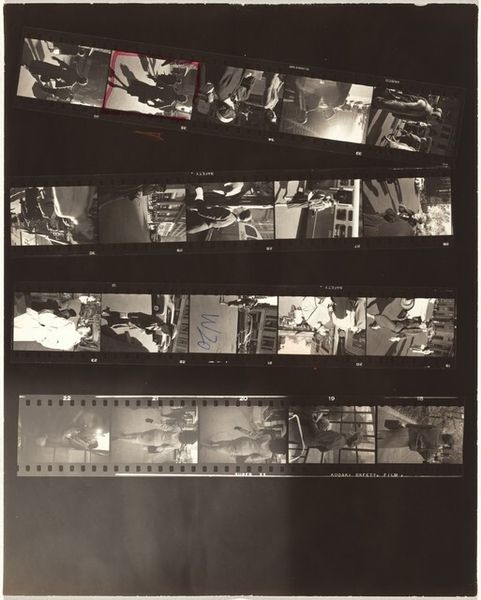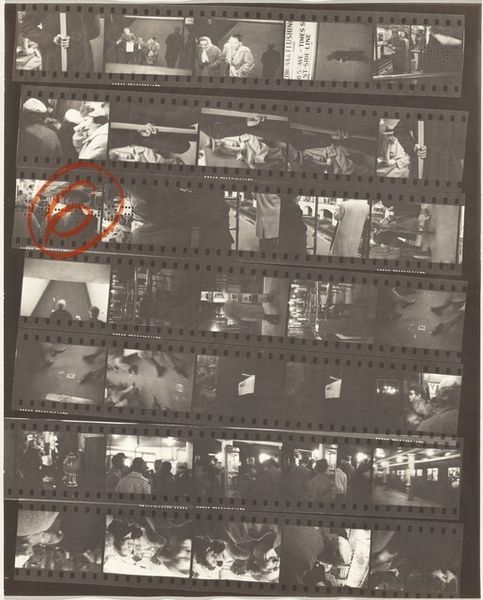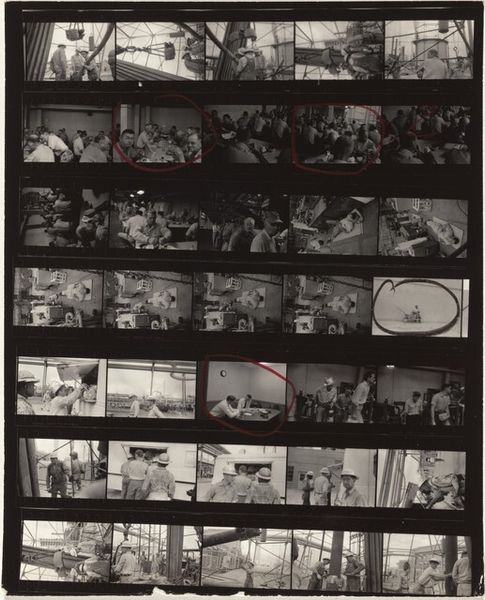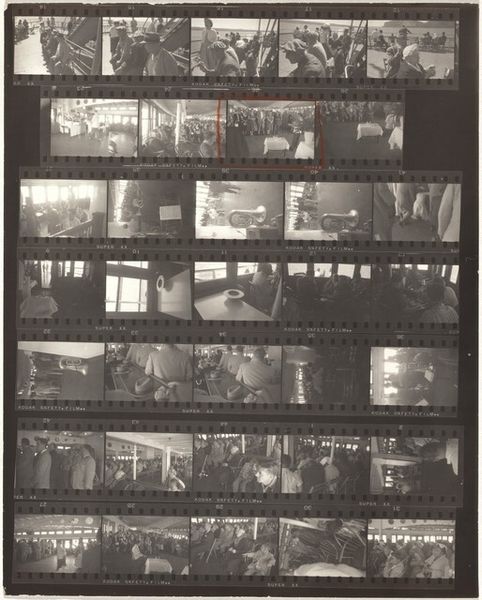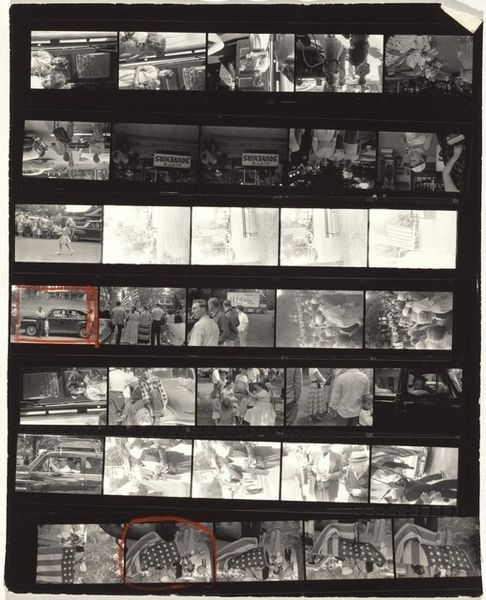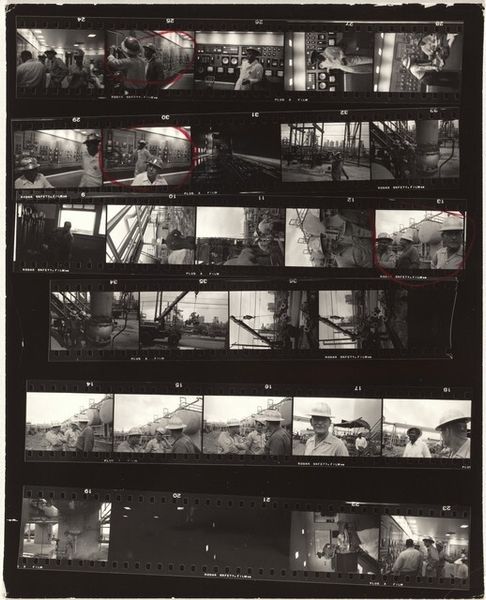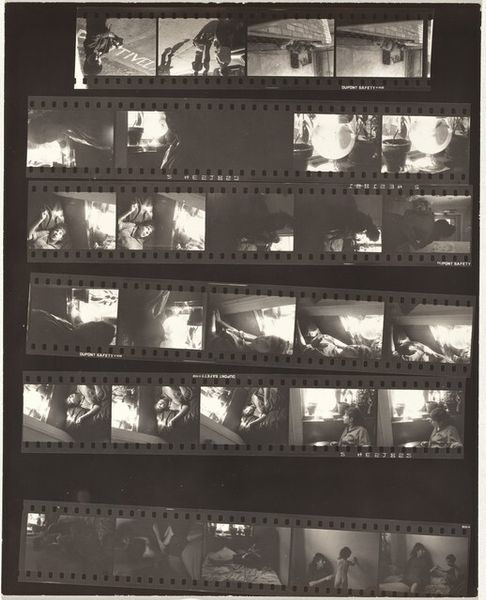
print, photography, gelatin-silver-print
#
african-art
#
film photography
# print
#
photography
#
gelatin-silver-print
#
film
#
realism
Dimensions: overall: 25.2 x 20.2 cm (9 15/16 x 7 15/16 in.)
Copyright: National Gallery of Art: CC0 1.0
Curator: Let's discuss Robert Frank's 1964 gelatin silver print, "Mombasa and Nairobi--Africa 1." Editor: It's a raw presentation, almost brutally so. The stark black and white, the overlapping film strips – it feels unfinished, urgent. Curator: Indeed, the film strip format makes this photography a commentary on photojournalism and the way African nations were represented at that time. We're seeing the process, the outtakes alongside the usable images. Editor: The high contrast emphasizes texture and the stark differences in light. It calls my attention to the granularity of the images. What's he trying to evoke by layering and juxtaposing them this way? Curator: Frank documented his travels across Africa. By displaying the unedited strips, Frank's approach resists the curated, often colonial, narratives presented by mainstream media. This speaks to ideas of representation. Who controls the image, who tells the story? Editor: I see. The layering does challenge the viewer. You have to work to assemble meaning from the fragments. But the visual information contained inside of each of these shots are really amazing. What narratives can you interpret in all those different shots? Curator: Precisely! And it encourages us to question the authority of singular images. We have frames filled with bodies, possibly victims, maybe witnesses. There's a formal ambiguity but there's also a sense of political statement that Frank brings up as an author. Editor: So, he's pushing back against the romanticized, exoticized versions of Africa that were typically circulated in the West. He does so with stark, unsentimental, fragmented imagery and exposing his photographic process itself. The presentation is disruptive as his photographs want to deliver political tension from the subject of the photographs and the act of producing photographs itself. Curator: I agree. This work challenges viewers to consider the circumstances behind each shot and to deconstruct their own preconceived notions about a place and a continent. Editor: Seeing it through that lens changes everything. I'd initially written it off as a simple contact sheet, a functional object. Curator: Exactly! Its aesthetic rawness and layered images confront our perspectives head on. Editor: Now, I appreciate the depth that Robert Frank was looking to show the world back in 1964!
Comments
No comments
Be the first to comment and join the conversation on the ultimate creative platform.
